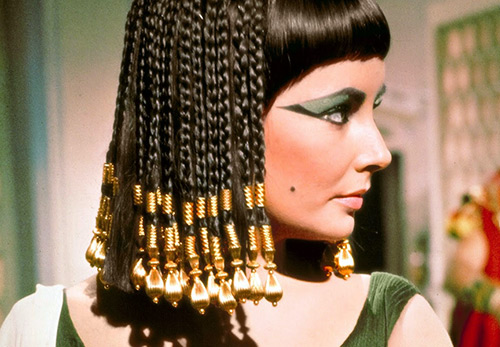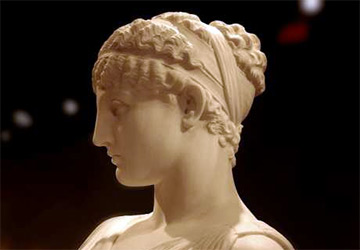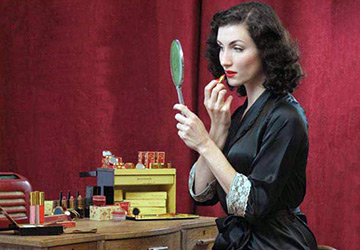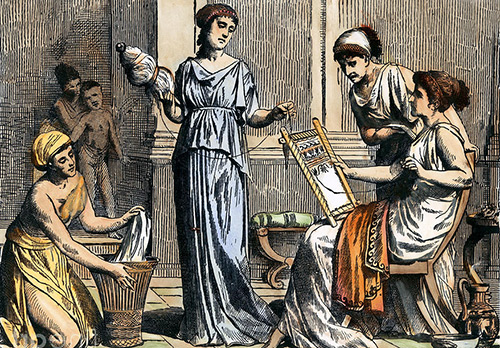Fashion history
The history of makeup from white to BB cream
Since the days of Antiquity in Europe, there has been an idea that facial skin cannot be perfect on its own. In order to meet the ideal of beauty, one or another cosmetic product and make-up should be applied to the face without fail.
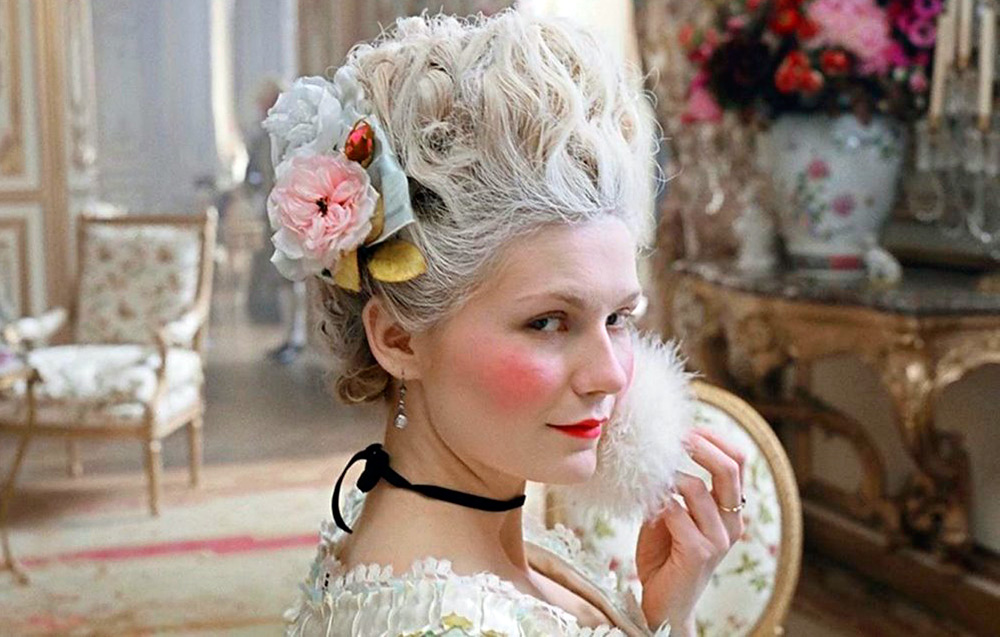
Still from the film "Marie Antoinette"
The history of makeup and cosmetics
As a matter of fact, the history of the foundation that is familiar to us today, to some extent, began in the days of Ancient Greece.
In ancient Egypt and in the East, for example, in Persia, they did not know the means for changing the skin color of the face. For these peoples, a natural dark complexion was considered beautiful. The ancient Egyptians did not try to avoid tanning. But in the days of Antiquity (in Ancient Greece and Ancient Rome), everything was quite the opposite.
In ancient Greece, white skin was considered beautiful, like that of goddesses,
after all, the goddess Hera was described as "white-handed"
after all, the goddess Hera was described as "white-handed"
And in Ancient Greece, and in ancient Rome it was believed that ideal skin is white skin without any tan. Both Greek and Roman women hid from the bright sunlight, and also tried in every possible way to lighten the skin with the help of cosmetics.
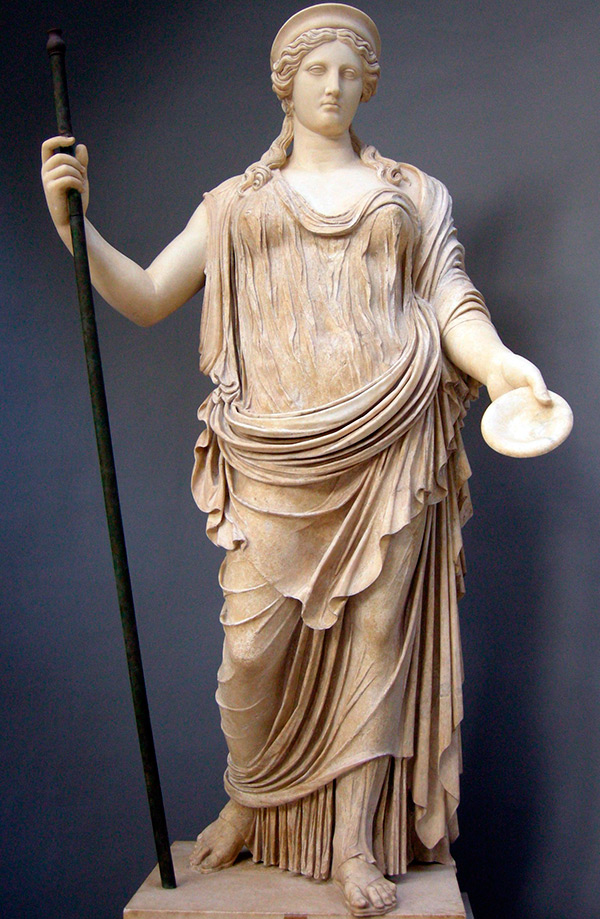
Statue of the goddess Hera - the wife of the god Zeus
The ancient Greek poet Homer was described as a "white-handed" goddess
Love for perfect white skin originated in ancient Greece and is associated with the description ancient greek goddesses... The gods and goddesses, according to ancient Greek mythology, were golden-haired and with white skin. And the inhabitants of Ancient Greece tried to lighten their hair by sprinkling flour, and also to make their skin more pale.
Lead white in the history of makeup
In the ancient Greek city of Athens, the history of such a cosmetic product designed to lighten the skin as cerussa - lead whitewash - begins. And, in general, poisonous lead white for whitening the skin of the face will be used in Europe until the 19th century. After all, this cosmetic product was very effective.
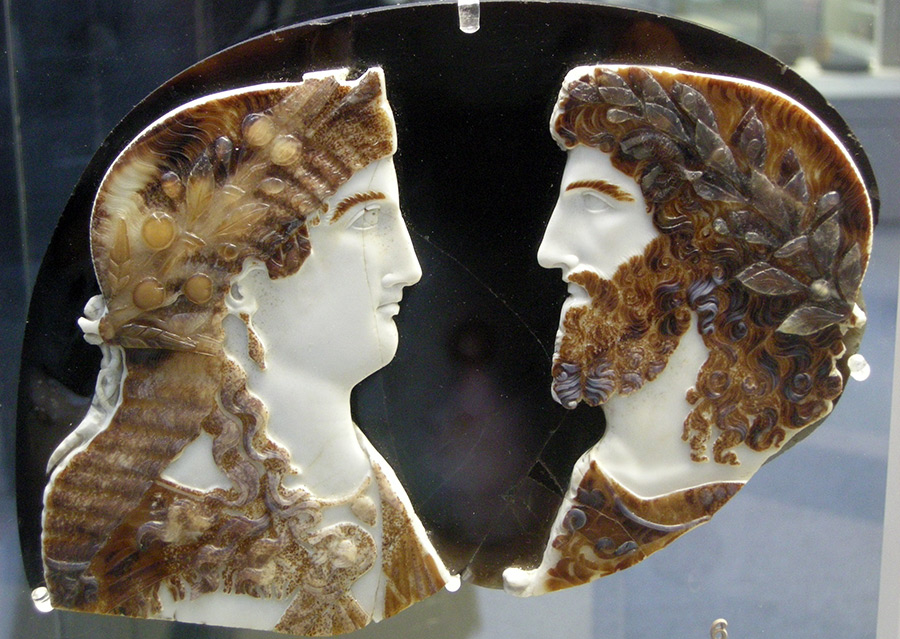
Zeus and Hera
Cameo 1st century AD
After applying white lead, the skin acquired a beautiful pure white color. The only drawback, if you start using Cerussa, you will need more and more of this product, as it spoils the skin. And in order to mask the imperfections of the skin of the face that appear from the use of lead whitewash, the ladies used lead whitewash in even greater quantities. Until the 19th century, the health risks of lead were unknown in Europe.
Cerussa - lead whitewash, which appeared in ancient Athens
The method of making cerussa has also remained practically unchanged since the days of Ancient Greece. And in ancient Greece, lead white was made as follows:
1. Lead was placed in a ceramic vessel with a small amount of vinegar.
2. After about 10 days, the vessel was opened and the layer of rust formed during this time was removed.
3. This operation was repeated several times until all the lead was dissolved.
4. The cleaned off rust was powdered and boiled with water.
5. As a result, at the bottom of the vessel, after cooking, a white precipitate was obtained - this is the lead white
There is a version that in ancient Greece the idea of using lead for white was arose due to the extraction of silver. Near Athens in ancient times there were mines where silver was mined, and mountains of white lead pigment remained as waste from this production.
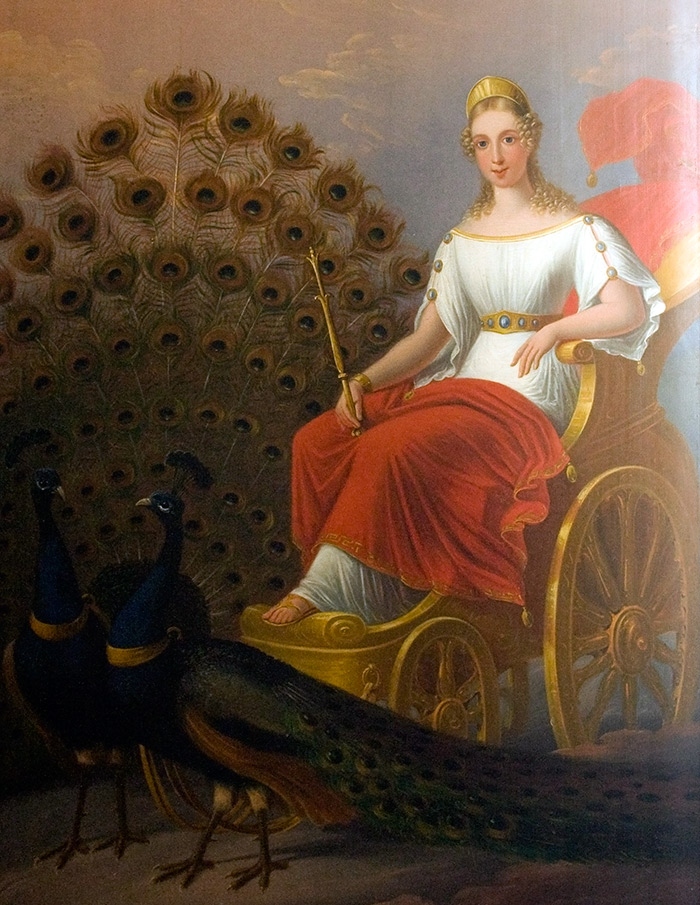
Hera in a cart pulled by peacocks
Painting of the XIX century.
However, both in ancient Greece and in ancient Rome, although women brightened their faces, they tried to adhere to the measure. The amount of white on the face of a noble matron was supposed to be minimal, while only women of easy virtue were allowed to paint brightly.
Leech behind the ear - the best cosmetic product of the Middle Ages,
pallor of the face - guaranteed
pallor of the face - guaranteed
In the Middle Ages The Virgin Mary becomes a kind of ideal of beauty. Ideas are born about the unearthly pallor of her skin - "virgin pallor" of the skin. There are ideas that young girls who do not have children yet have lighter skin than older women.

Artist Rogier van der Weyden
Portrait of a lady, 15th century
At the same time, ideas are emerging that the skin of aristocrats, unlike peasant women, should be pale and without sunburn. Indeed, unlike the swarthy peasant women who work in the field under the scorching rays of the sun, aristocrats do not engage in heavy physical labor.

Joan of Arc
However, cosmetics, including white lead, were not encouraged by the church. And in the Middle Ages, pallor of the skin was achieved by avoiding the sun's rays, as well as with the help of leeches, which were placed behind the ear.
The most popular cosmetic product of the 16th century "Venetian whitewash" - the "highest quality" whitewash with a higher lead content
Renaissance, as in the days of Ancient Greece and Ancient Rome, it was believed that makeup should be as natural as possible. However, already in the 16th century, when the city of Venice began to dictate fashion, white lead became very popular among noble ladies. At the same time, the best lead whitewash is considered to be "Venetian whitewash", which was also called the "Spirit of Saturn". The advantage of "Venetian whitewash" was that it contained a much higher amount of lead than whitewash from other manufacturers.
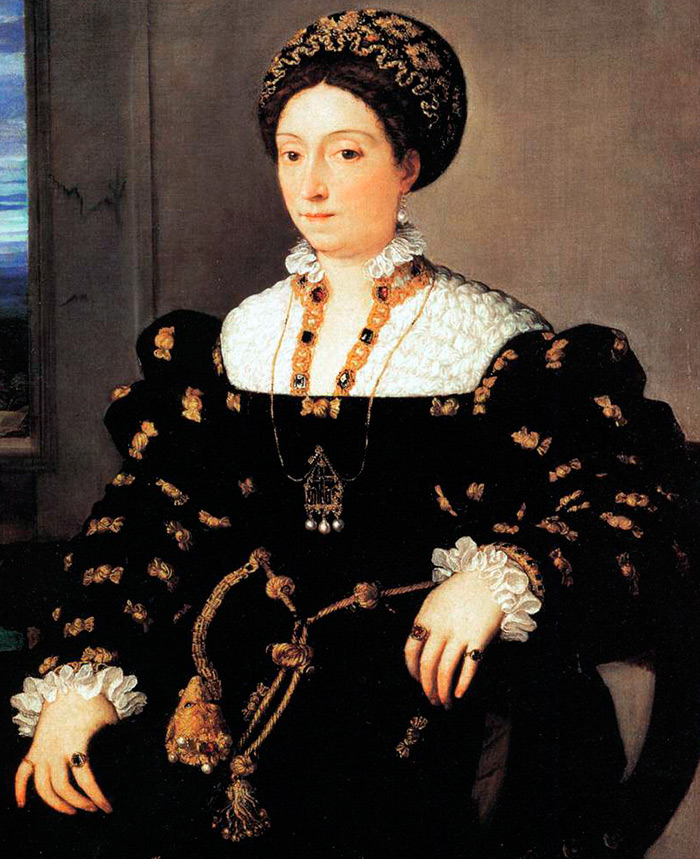
Venetian painter Titian
Portrait of Eleanor Gonzaga, 16th century
"Venetian whitewash" covered the skin very tightly and gave it a satin smoothness. However, over time, the skin under the influence of lead became gray-yellow and wrinkled. But the aristocrats of that time did not notice the connection between the use of cosmetics and the deterioration of the skin. The newly formed flaws were again masked with white lead. It turned out to be a vicious circle, very profitable for whitewash traders.
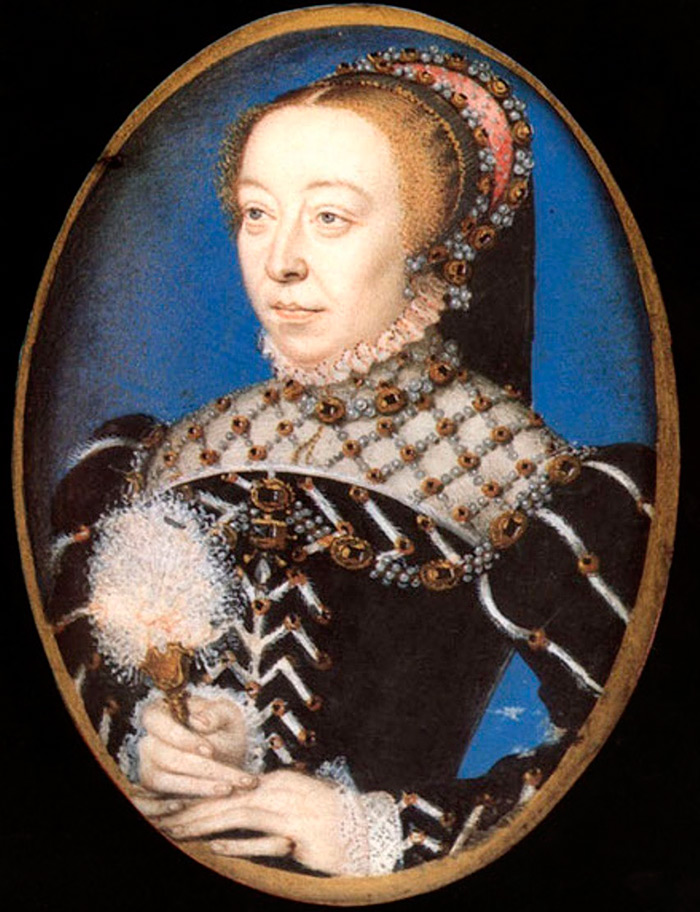
Catherine de Medici
Portrait
In addition to white, in order to remove freckles and age spots from the face, a mixture of mercury with arsenic and musk was also used during the Renaissance. For example, a French queen from Italy, Catherine de Medici, used such a poisonous mixture to remove age spots from the skin.
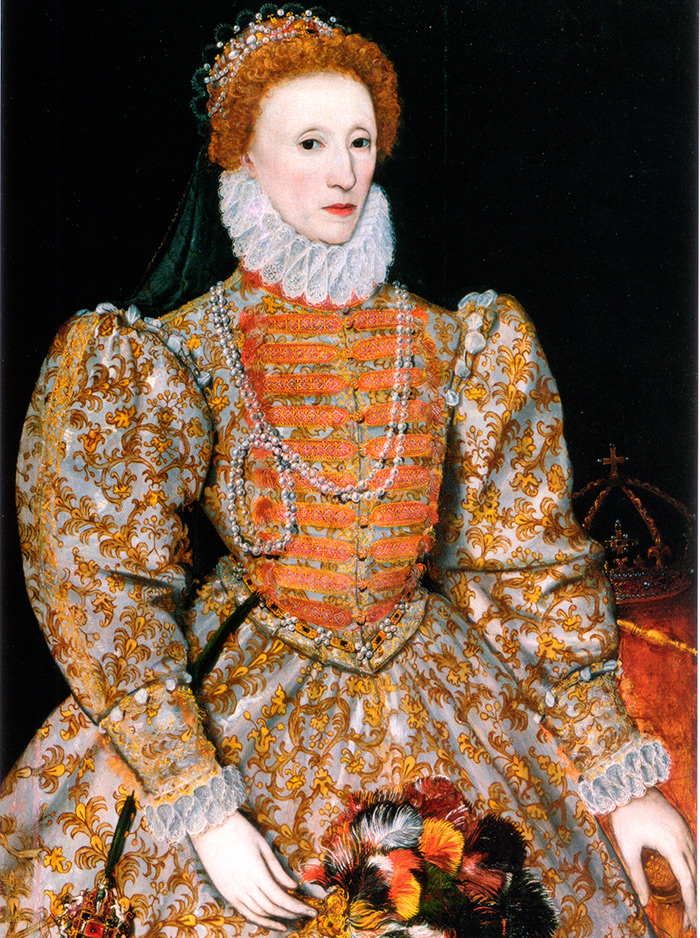
Queen Elizabeth I of England
Portrait
Faces as masks - "puppet" make-up of the 17th-18th centuries.
The 17th-18th centuries in European history can easily be called the time of the domination of whitewash and blush. Moderation at this time was out of the question. Luxury and almost theatrical make-up are in fashion. The faces of court ladies and gentlemen are like the faces of porcelain dolls. At the same time, the face was covered with whitewash in several layers. And to emphasize the whiteness of the face were scarlet blush and lipstick, as well as traced blue veins and black artificial moles - flies.
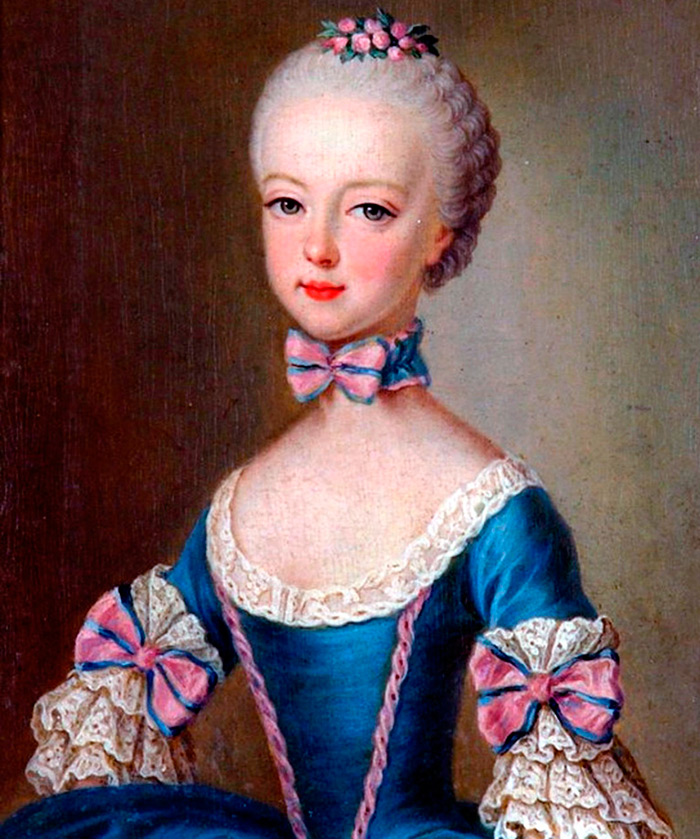
Marie antoinette
Portrait
They tried to imitate aristocrats and simple townspeople. However, in the absence of money for expensive lead whitewash, they used simpler means to whiten the skin of the face - ointments, which included peas, chickpeas, almonds, barley, horseradish seeds, and milk. Everything is exclusively natural and harmless. The effect was almost invisible, but at the same time, the skin of urban women in the 17th-18th centuries looked much better and healthier than that of aristocrats.
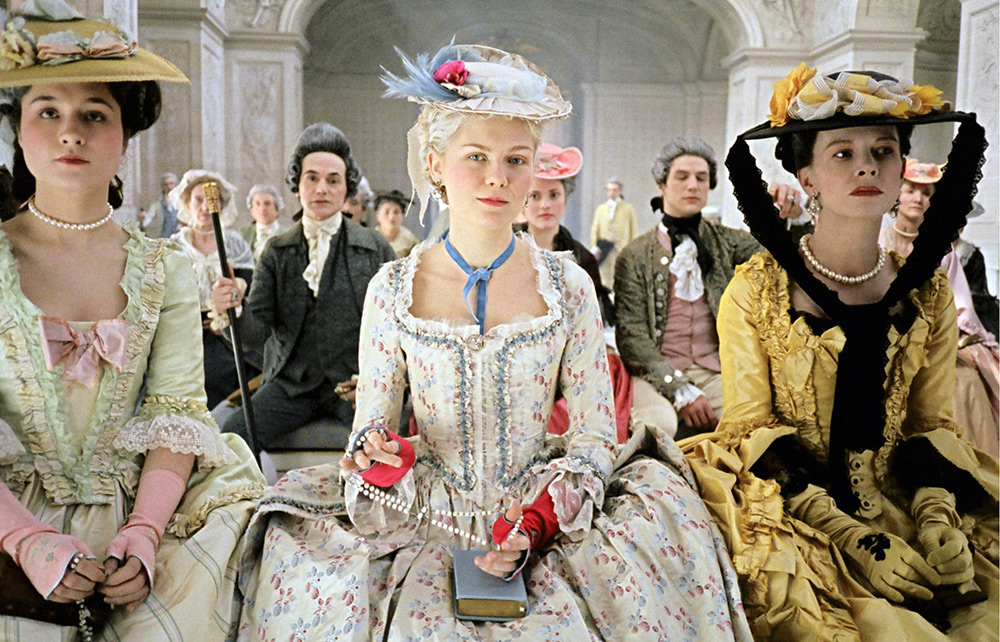
Still from the film "Marie Antoinette"
In the 19th century, ladies from high society practically ceased to use decorative cosmetics, but actresses and singers still use white. And even at the beginning of the twentieth century, powders were sold in Europe based on the same lead, which is unsafe for health.
Not only in Europe, but also in Asia, white faces were considered beautiful.
In addition to Europe, a white complexion was considered incredibly beautiful in Asia - in China, Korea and Japan. Possessing by nature skin with a yellowish tint, Asians mercilessly tried to give their faces as white as possible.
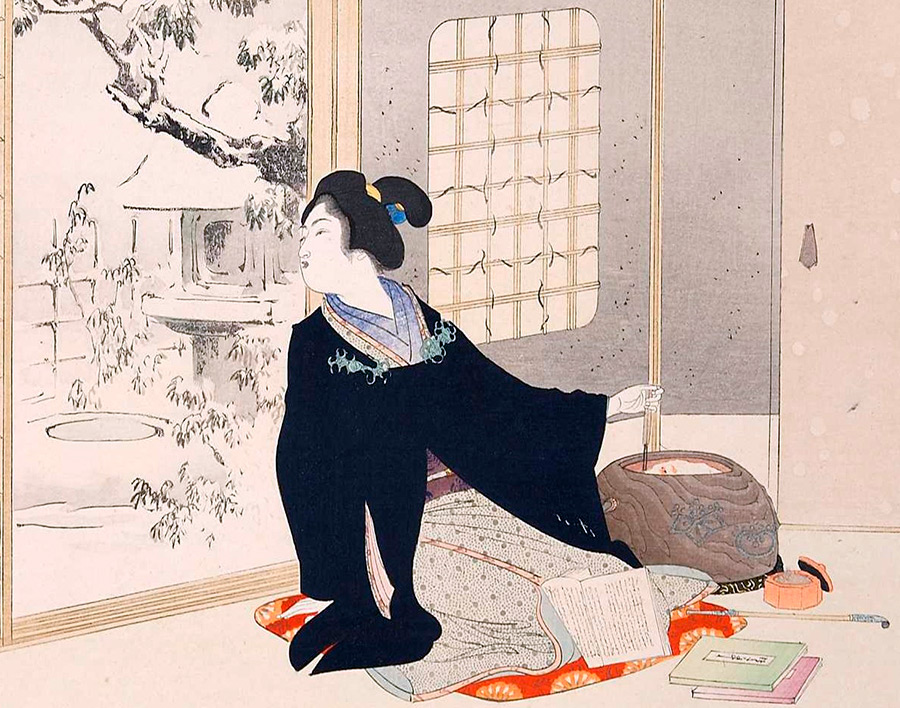
Painter Mizuno Toshikata (1866-1908)
Snow covered garden
Lead was known in both China and Japan.But much more often in Asian countries, harmless rice powder was applied to the face. Rice powder is believed to have been invented in ancient China. For its manufacture, grain of rice was used, which was ground into flour.
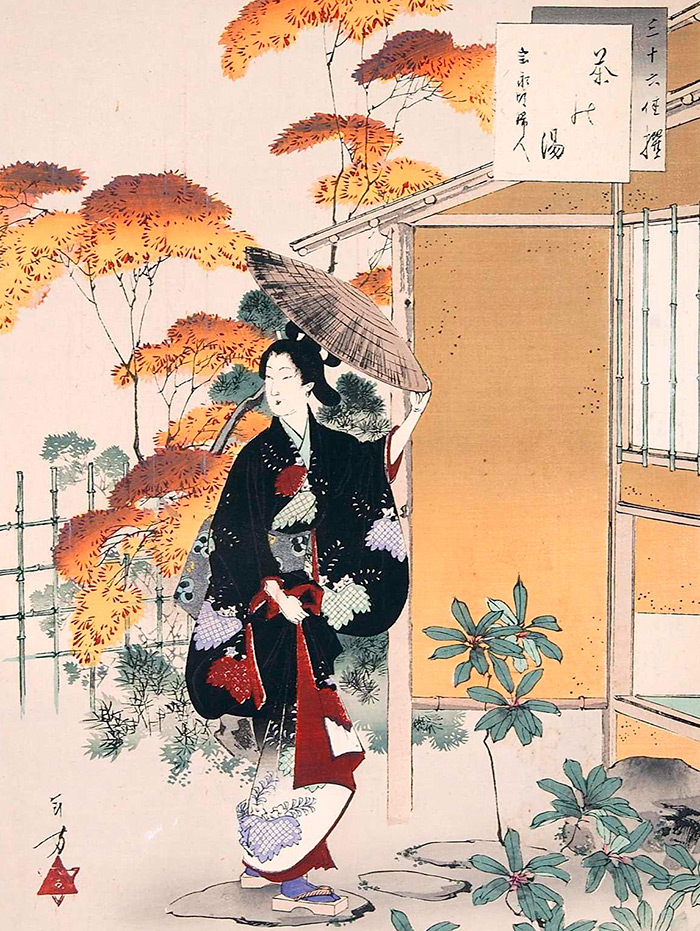
Painter Mizuno Toshikata (1866-1908)
Tea ceremony
White lead also originally appeared in China, most likely during the Shang dynasty (1600-1027 BC). And already from China they penetrated into Japan, where they were initially used only by the ladies of the court, and from about the 16th century by all other women.
China - the birthplace of pearl powder
Pearl powder also appeared in ancient China. The time is somewhere around 320 years. Such a powder was made from crushed pearls and was originally used for medicinal purposes. In traditional Chinese medicine, pearl powder was believed to reduce sun damage and prevent the formation of age spots on the skin. In principle, modern scientists agree with the sages of ancient China about the healing properties of pearl powder.
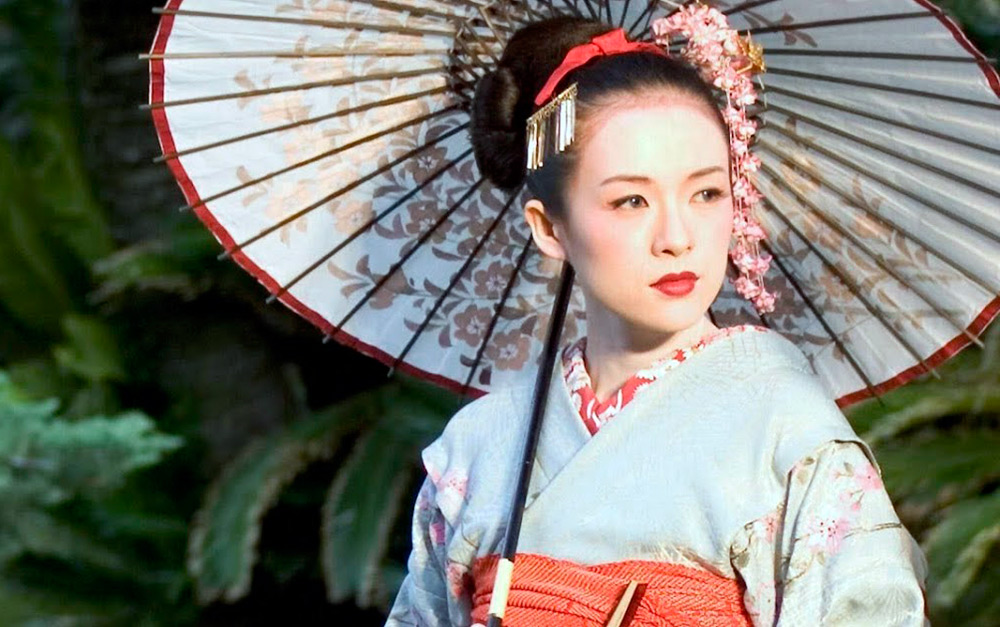
Still from the film "Memoirs of a Geisha"
In Korea, in ancient times, in order to give the skin the color "like white jasper" praised by poets, they used a completely non-poetic means - nightingale droppings. Nightingale droppings were mixed with flour to create a lightening powder. The Japanese also used this kind of whitening agent.
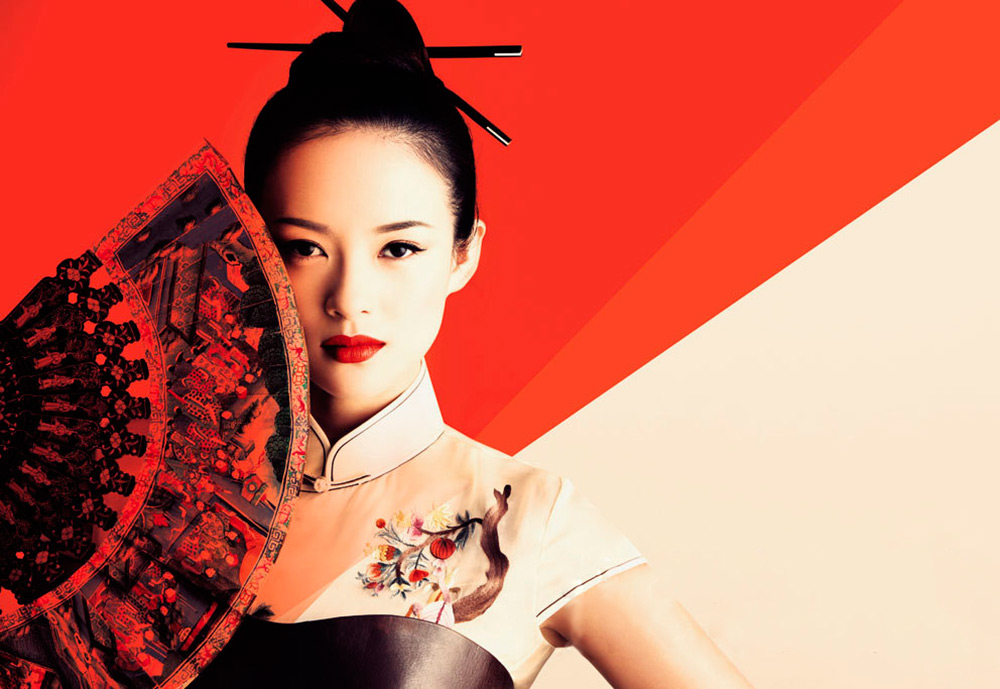
Still from the film "Memoirs of a Geisha"
The history of makeup and the composition of cosmetics in the 20th century
In the twentieth century, the fashion for white faces fades away. Coco Chanel made a real revolution in the 1920s, because it was she who introduced the fashion for tanning. From now on, in the fashion of the twentieth century, dark tanned skin, and not deathly pale, as it was for many centuries of European history.
XX century - fashion for tanning
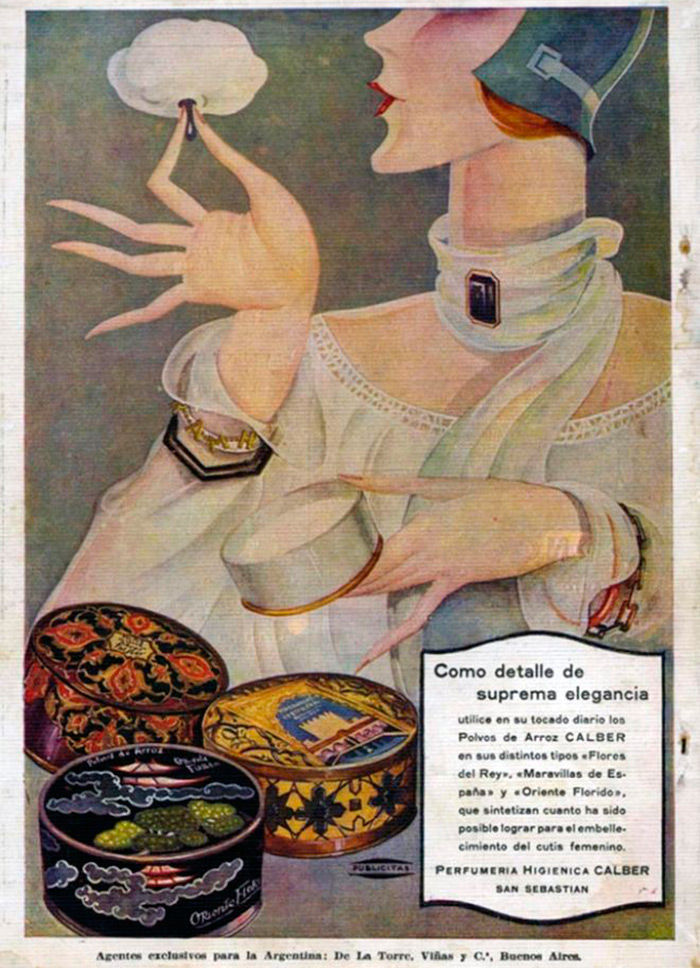
In the first half of the twentieth century, powder became a popular cosmetic product that replaced whitewash. Powder is a powder-like cosmetic product used to give the complexion a certain shade. Already in the 1930s, about three thousand varieties of powder were produced in Europe and the United States with a wide variety of shades - from beige and pink to fashionable tan colors. And the first "compact" powders with puffs for application appeared in the 1920s.
A little radiation and your skin will glow
At the beginning of the twentieth century, in addition to the quite ordinary powder, powders with a shine effect were also on sale. These powders could be bought in London and Paris. Radior was founded in London in 1917. She sold cosmetics (powder, night cream, blush), which included the radioactive element radium, discovered in 1898 by Marie and Pierre Curie. However, nothing was known about its insecurity, as before with lead. At the beginning of the twentieth century, cosmetics with radium could be bought in the most famous department store in London - Harrods.
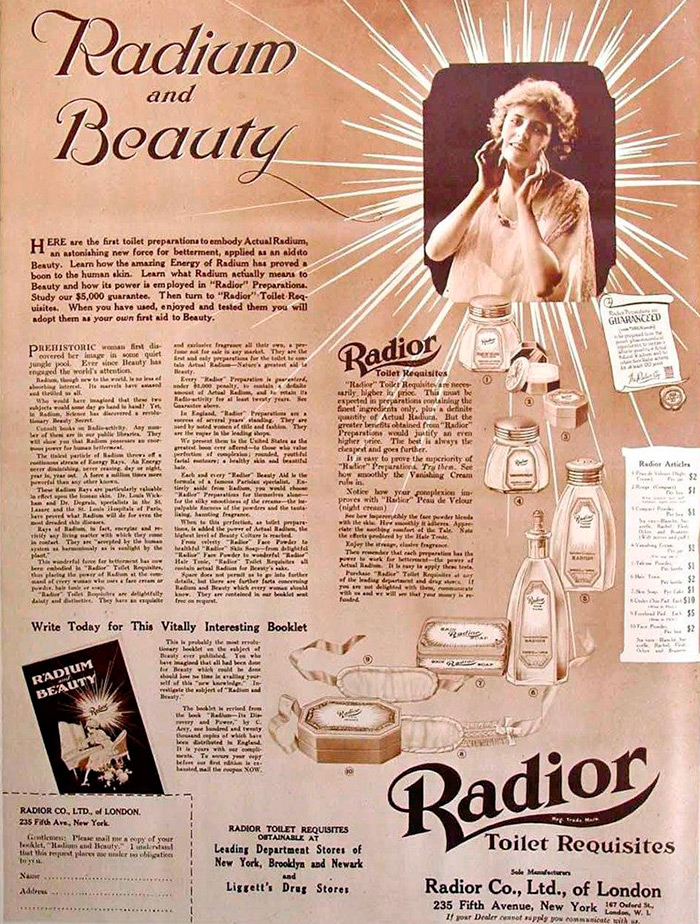
And in Paris in 1933 there was a company called Tho-Radia, which also sold powder, blush, toothpaste, and night cream with a radiant effect. Tho-Radia cosmetics advertisements spoke of the "scientific approach to beauty." And one of the founders of the company was Alfred Curie, who, as it turned out later, had nothing to do with Marie and Pierre Curie. And perhaps it did not exist in reality, but was invented only as a good marketing ploy.
The composition of modern cosmetics does not include radium and thorium, as well as lead banned in Europe today for use in cosmetics, but a scientific approach, according to advertising, is present.
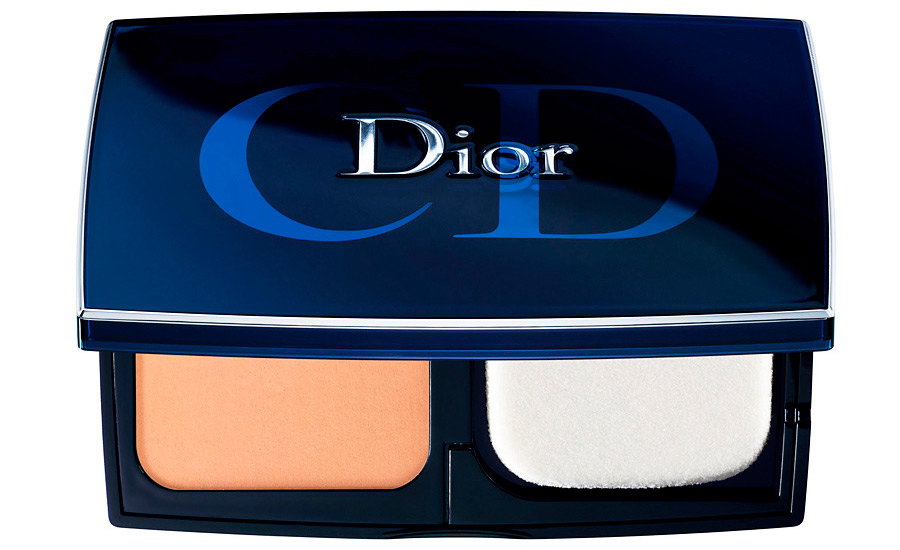
The composition of powders today includes such substances as zinc oxide, titanium dioxide, kaolin (white clay), talc (a white mineral in powder form), dyes, both natural and artificial, as well as fragrances to impart a pleasant smell.
"Father" of the tonal basis - Max Factor
The first tonal basis also appears at the beginning of the twentieth century - in 1914. Max Factor became its inventor. And he came up with a tonal foundation for actors as a more convenient cosmetic product than the fat-based pencil previously used in theatrical makeup. The foundation invented by Max Factor was similar in texture to a cream.And on the faces of the actors on the screen, this cream looked natural, unlike the previously used pencil with paint, which created the effect of a mask.
In 1937, Max Factor launched a foundation for everyone. It was a creamy powder that was applied to the face with a damp sponge.
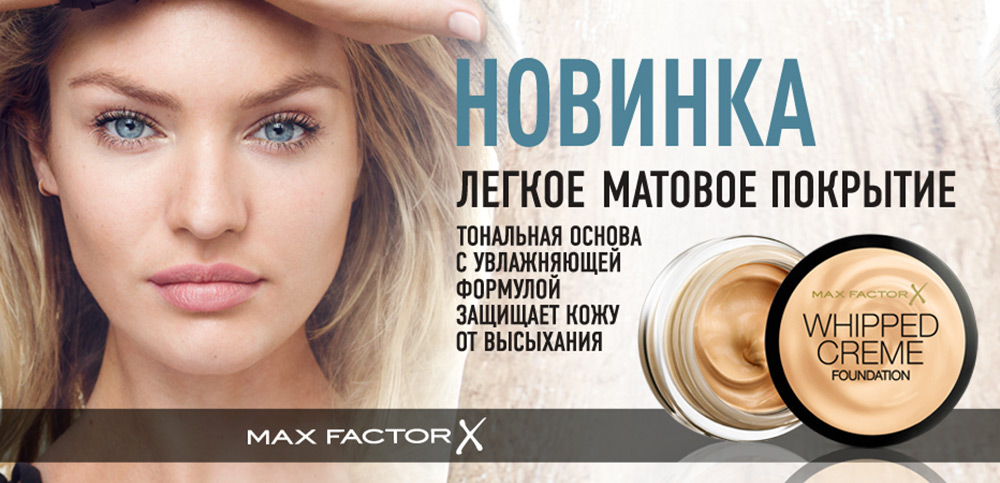
By the 1960s, a wide variety of foundations were being produced in Europe, including those in tan color. And at the beginning of the XXI, tonal foundations appear, which include silicone, which makes their presence on the face almost invisible.
Today, foundations are produced in a variety of forms - powder, liquid, creamy, and even in the form of sprays. At the same time, the decorative function of the tonal base (to hide skin imperfections) is increasingly being combined with care cosmetics.
BB-, CC-, DD- creams - foundation and skin care
So, for example, there was a BB cream. Its name Blemish Balm means "healing balm". This product protects and regenerates the skin and can also serve as a good makeup base. A similar product is CC-cream - Color Control. This cream nourishes and moisturizes the skin and evens out its tone.
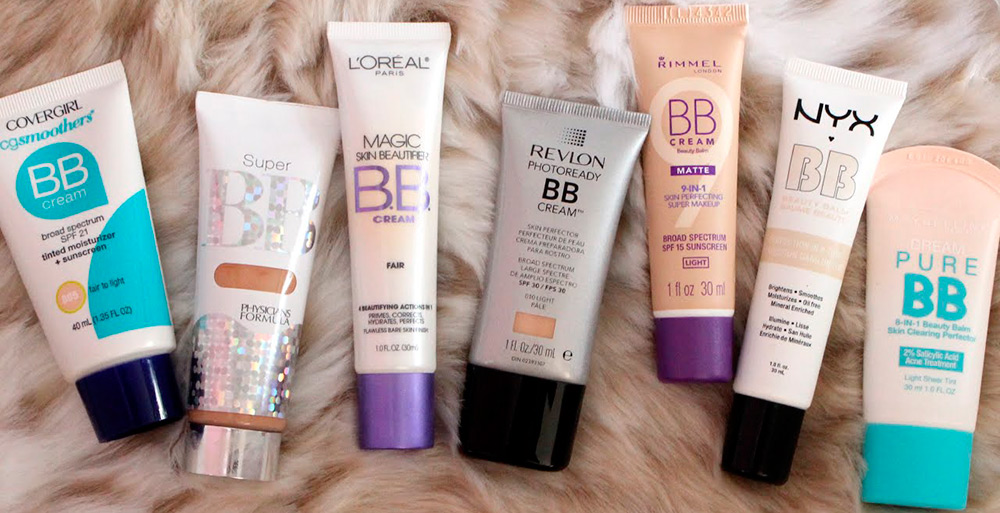
Another cream is DD-cream (Daily Defense). It is called a BB cream and CC cream hybrids, plus it has a sunscreen effect. The emergence of sunscreens has been a trend in recent decades. Indeed, just as the harm of lead was proven in the 19th century, today everyone knows about the dangers of sunburn for the skin. Excessive sun exposure or frequent tanning beds can lead to skin cancer, scientists say.
So, quite possibly, we are waiting for another round in the history of cosmetics and a return to the fashion for pallor.
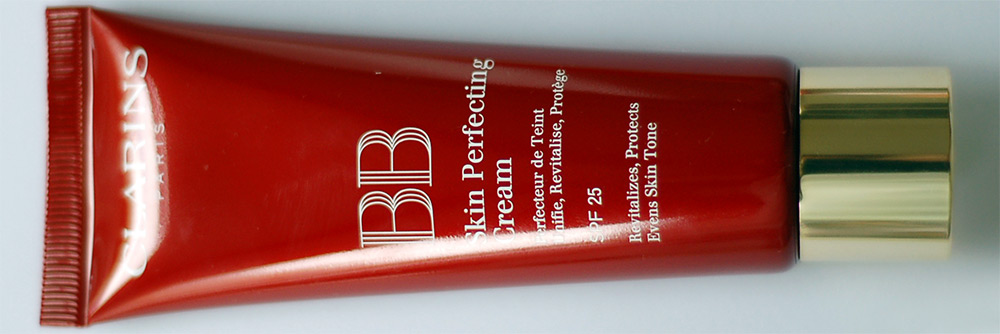
Comments and Reviews
Add a comment
Rating news
Shades of clothing that make women look younger
What shades of hair make women younger: rules and photos
Funny wedding dresses - photos and ideas
12 most expensive down jackets for the winter
How to look 25 at 40: tips from supermodels
Beautiful schoolgirls
Anti-aging haircuts and hairstyles for women
Fashionable skirts for autumn and winter
Fashionable women's trousers for the cold season
Fashionable and stylish sandals for summer 2024
Spring-summer 2024
 Fashionable dresses and tops with thin spaghetti straps
Fashionable dresses and tops with thin spaghetti straps
 Bandana tops: how to wear stylishly and beautifully
Bandana tops: how to wear stylishly and beautifully
 How to put together the perfect men's wardrobe for the summer
How to put together the perfect men's wardrobe for the summer
 Fashionable shorts for spring-summer 2024
Fashionable shorts for spring-summer 2024
 Fashionable skirts for spring-summer 2024: a guide to online shopping
Fashionable skirts for spring-summer 2024: a guide to online shopping
 The most fashionable dresses spring-summer 2024: styles and colors
The most fashionable dresses spring-summer 2024: styles and colors
 Fashionable total look 2024: ideas of images and trends
Fashionable total look 2024: ideas of images and trends

